HOW TO USE TERRALAM?
Proper use of TerraLam CLT mats ensures safe, stable access for heavy equipment and crews while extending mat life. This guide covers planning, installation, maintenance, and reuse to boost efficiency, cut costs, and protect terrain with TerraLam’s reliable, engineered solutions.
HOW TO USE TERRALAM?
What Is TerraLam? | Benefits | Uses Cases | Specifications | How to Use | Product Info | Production | FAQ | All Products
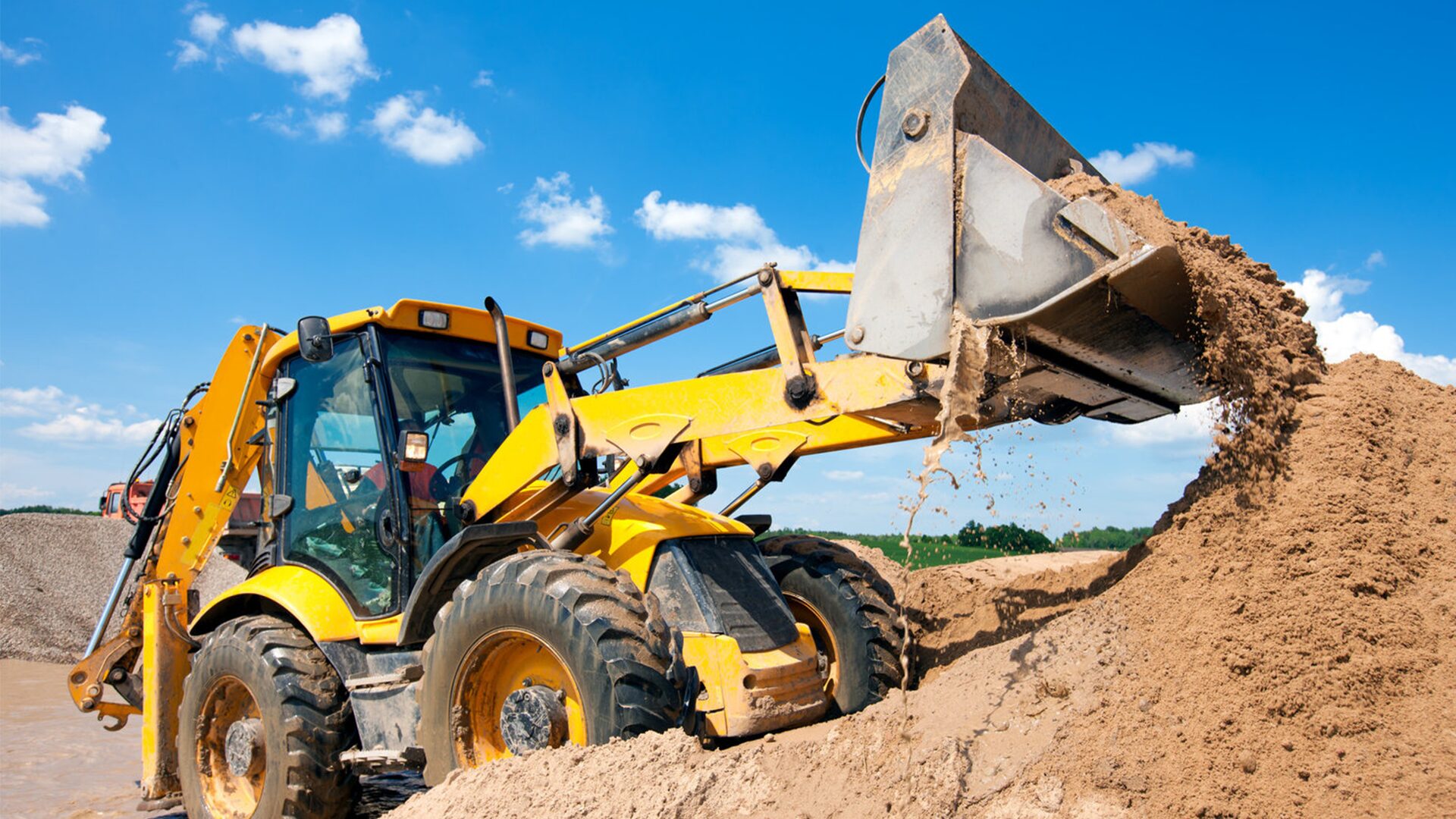
Plam Your Site Access Needs
Before installation, assess the terrain, environmental conditions, and load requirements to determine the best construction matting solution for your project. Consider factors like soil stability, weather conditions, and the type of equipment that will be used. Selecting the appropriate mat thickness—such as TerraLam 300, 500, or 700 series—ensures proper weight distribution and durability for the job. Additionally, identify regulatory requirements and restrictions to ensure project compliance and safety.
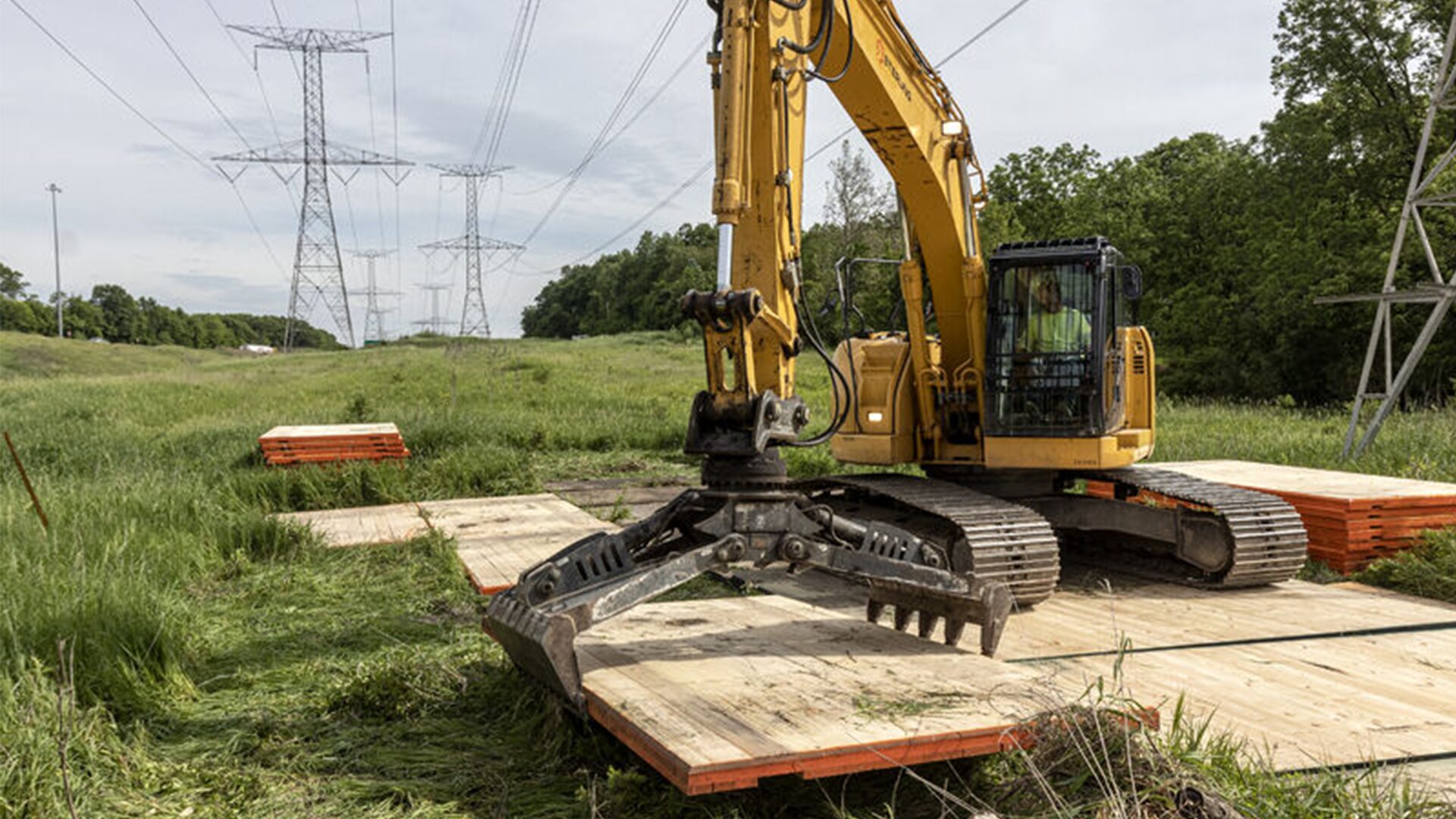
Determine Required Equipment
Proper installation of TerraLam mats requires the right equipment to ensure safe and efficient handling. The most common equipment used includes an excavator with a mat grapple, which allows for more precise placement. When using a forklift or loader, it’s important to have the correct fork size (min 6 ft) to securely lift and transport the mats without causing damage. In some cases, a telehandler may be used for added reach and flexibility in tight job sites.
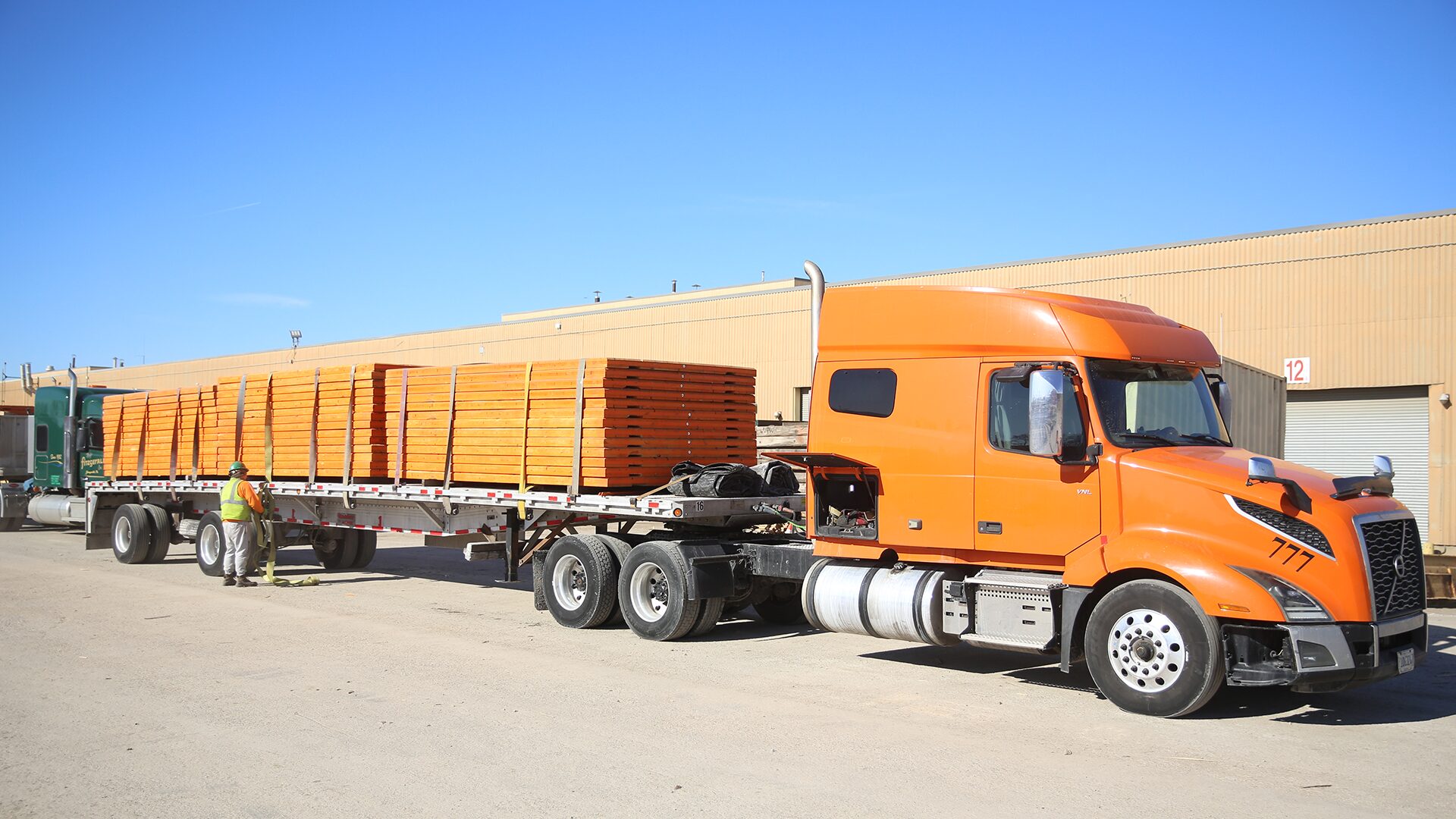
Transport & Stage CLT Efficiently
Coordinate deliveries using standard flatbed trucks; the mats are then secured using four straps for safe transport. Afterwards, stage CLT mats near the installation area to reduce unnecessary handling. Unlike other mats, which often require multiple workers, CLT mats can be unloaded and positioned by a single person using forklifts, loaders, or excavators, improving efficiency and minimizing labor costs.

Configure the Right Orientation
The standard method is to lay them perpendicular to traffic for faster installation. However, for tracked equipment or a smoother ride, aligning them parallel to traffic increases mat longevity and improves ride quality. Selecting the right layout improves efficiency, ride quality, and mat longevity. When extra stability is needed, bolted connections can reinforce the mat placement.
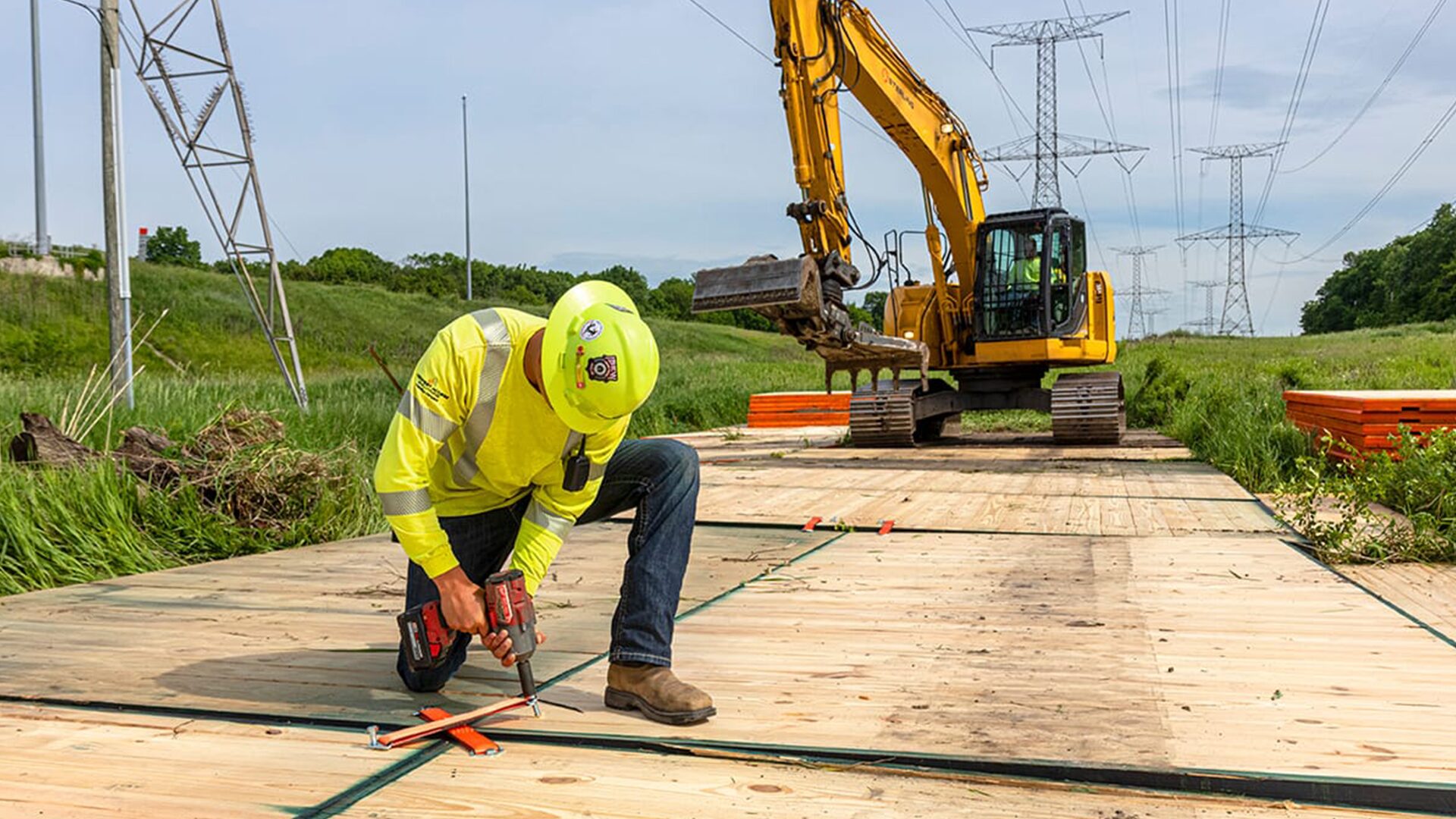
Connect the Mats Securely
To connect the mats, lay the TerraLam Connect strap so that each end rests on a different mat. Ensure the bolt plate hole is flat against the mat and positioned 4-6 inches inside the mat’s edge, avoiding seams between planks. Using an impact driver, drive the screws through the holes in the bolt plate until they are secure. When mats need to be moved, remove the TerraLam Connect straps and screws, and store them in the shipping container for reuse.
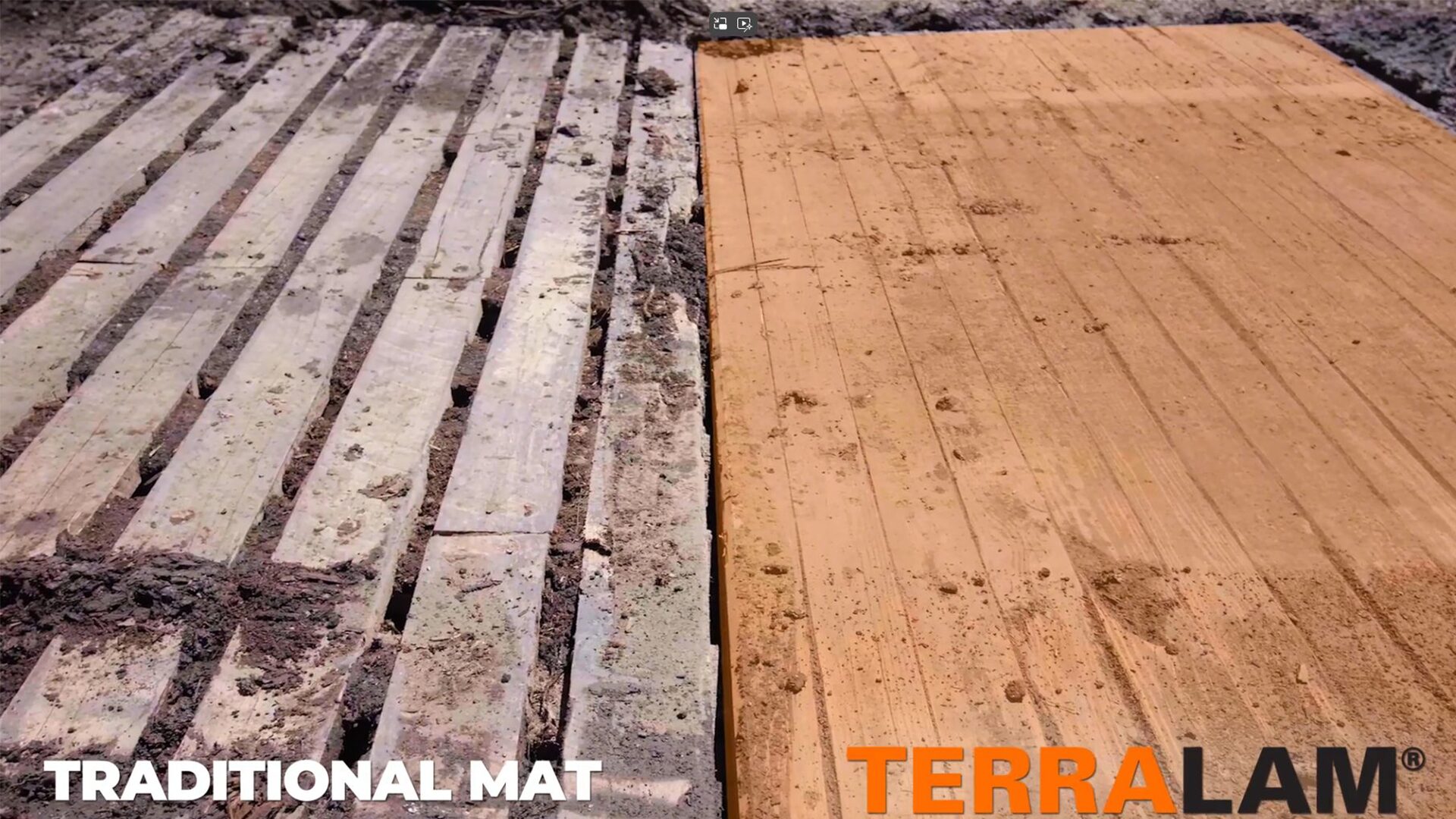
Monitor & Maintain During Use
Regularly inspect CLT mats for shifting, wear, or damage to maintain a safe and stable ground protection surface. Removing excess mud, debris, or standing water helps preserve traction and overall performance. Adjustments may be needed if environmental conditions change, such as heavy rainfall or shifting ground. Properly securing mats after adjustments ensures continued stability and reduces the risk of accidents on-site.

Remove & Clean CLT After Use
Lift and stack mats to prevent damage, ensuring they stay in good condition for future use. Before transport, remove mud and debris using dry brushing, washing, or bleeding to comply with environmental regulations and prevent contamination. Afterwards, store mats in a dry, level area with stickering to allow airflow and prevent moisture buildup, which helps preserve their integrity.

Reuse, Resell, or Recycle
TerraLam mats are built for multiple uses, so inspect them after each project to determine their continued viability. Lightly used mats can be resold for secondary applications, and when they reach the end of their lifespan, they should be repurposed or recycled responsibly – which is made all the easier thanks to the lack of any metal materials you normally find in timber.
DISCOVER THE TERRALAM DIFFERENCE
Maximize the performance of your TerraLam mats with proper planning, installation, and maintenance. Whether you’re setting up temporary roads or heavy equipment platforms, following best practices for ground protection ensures safety and efficiency. Get expert guidance on using TerraLam today.
